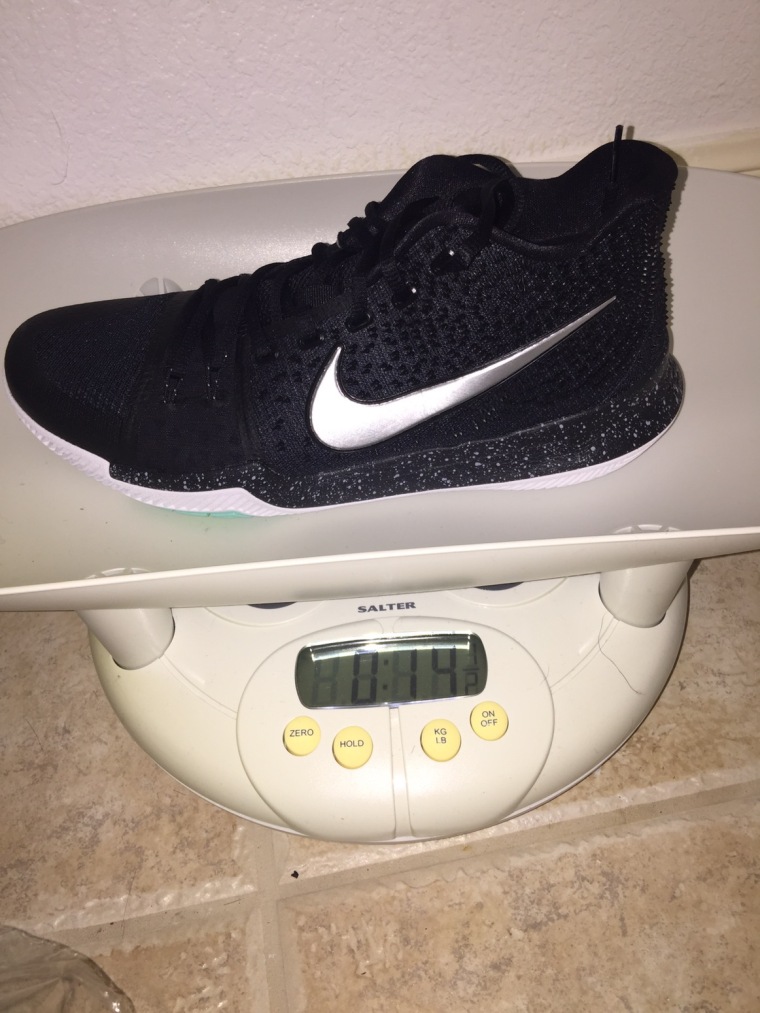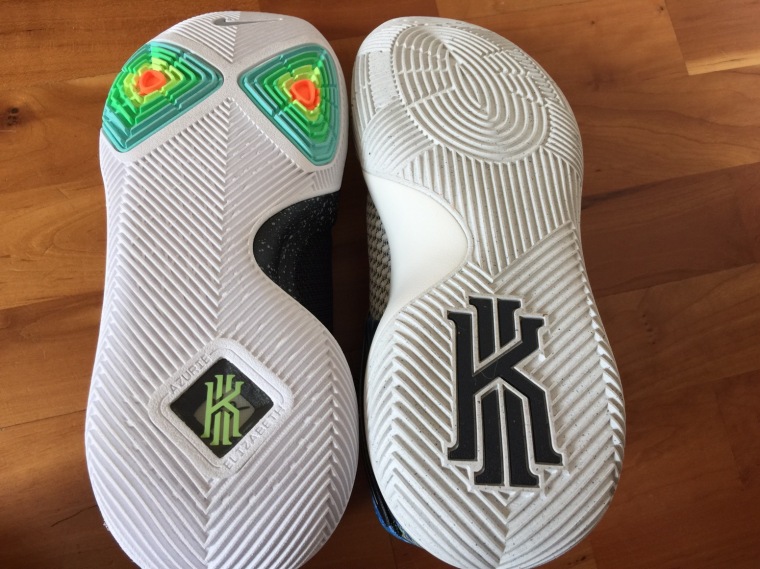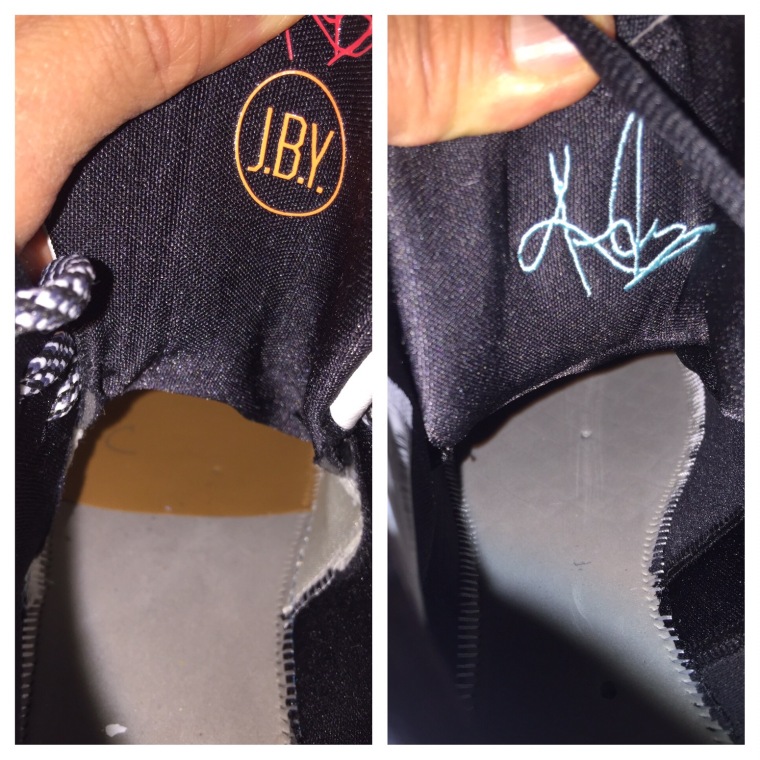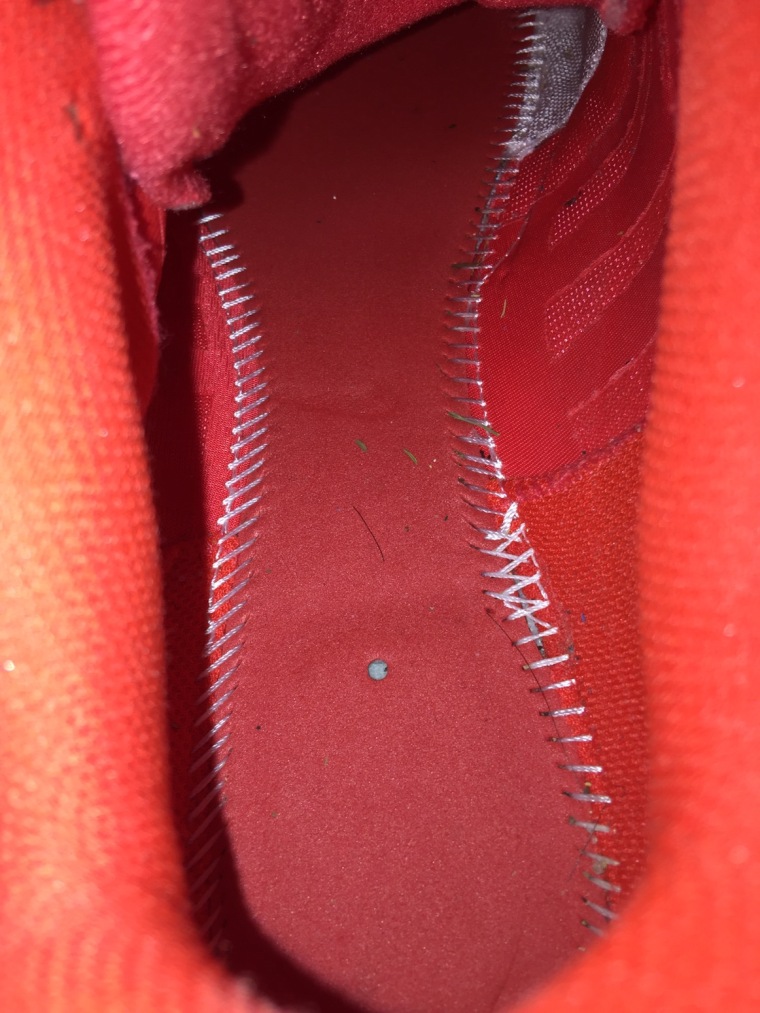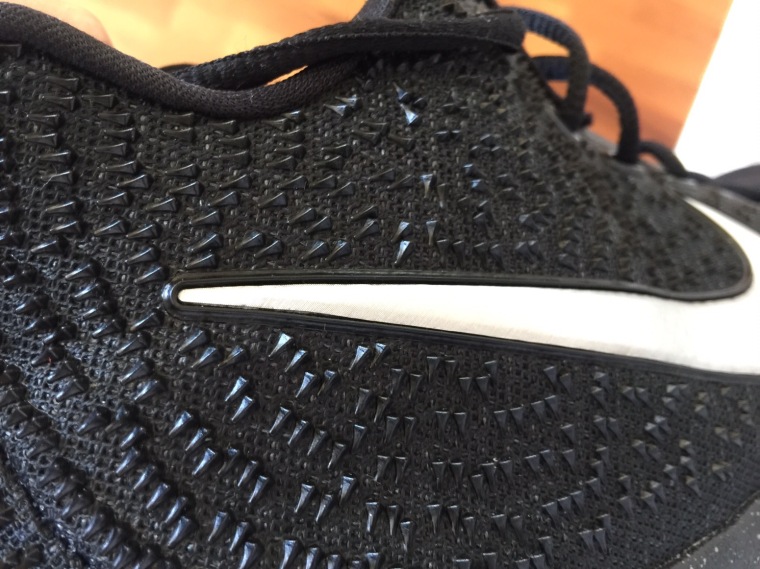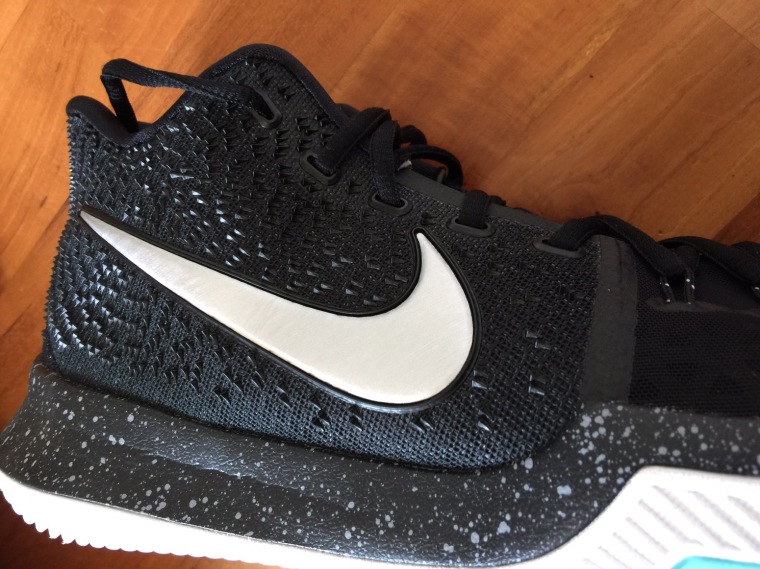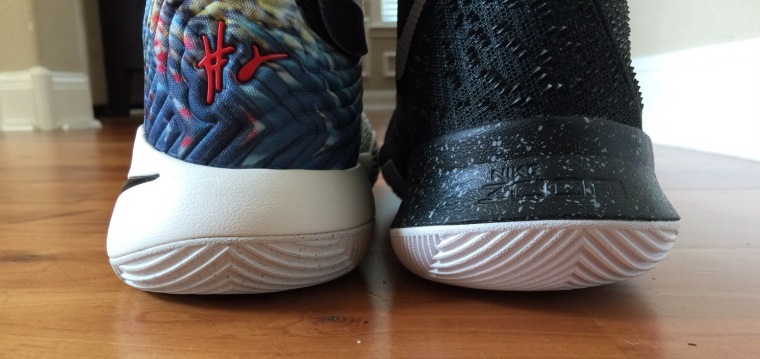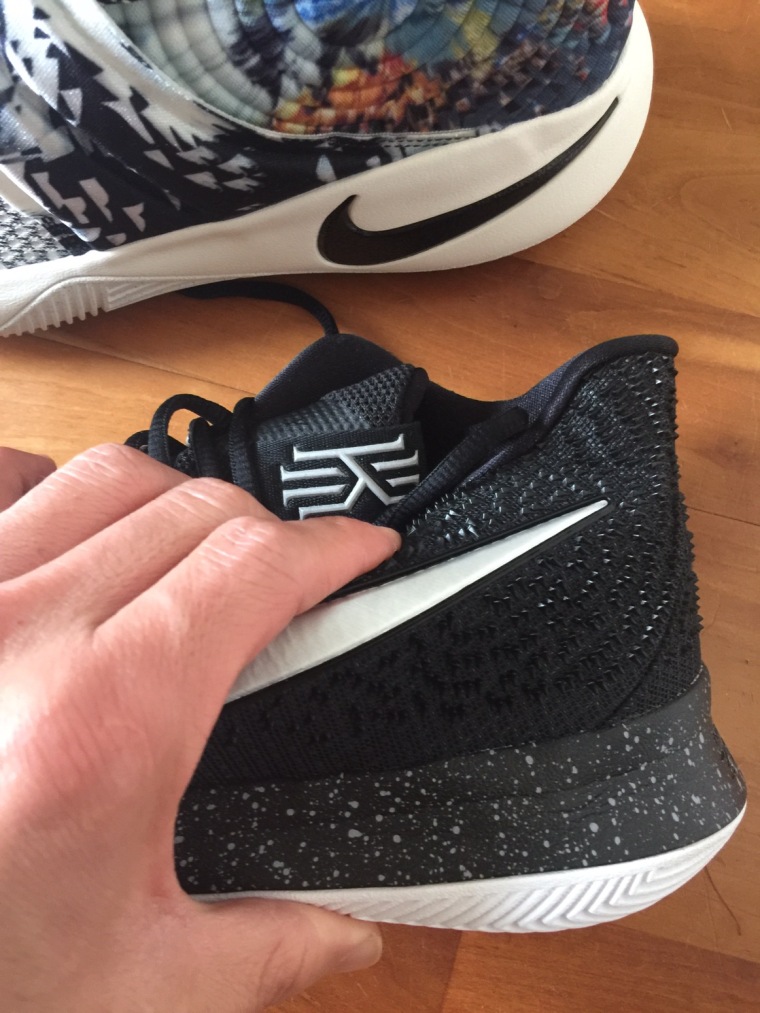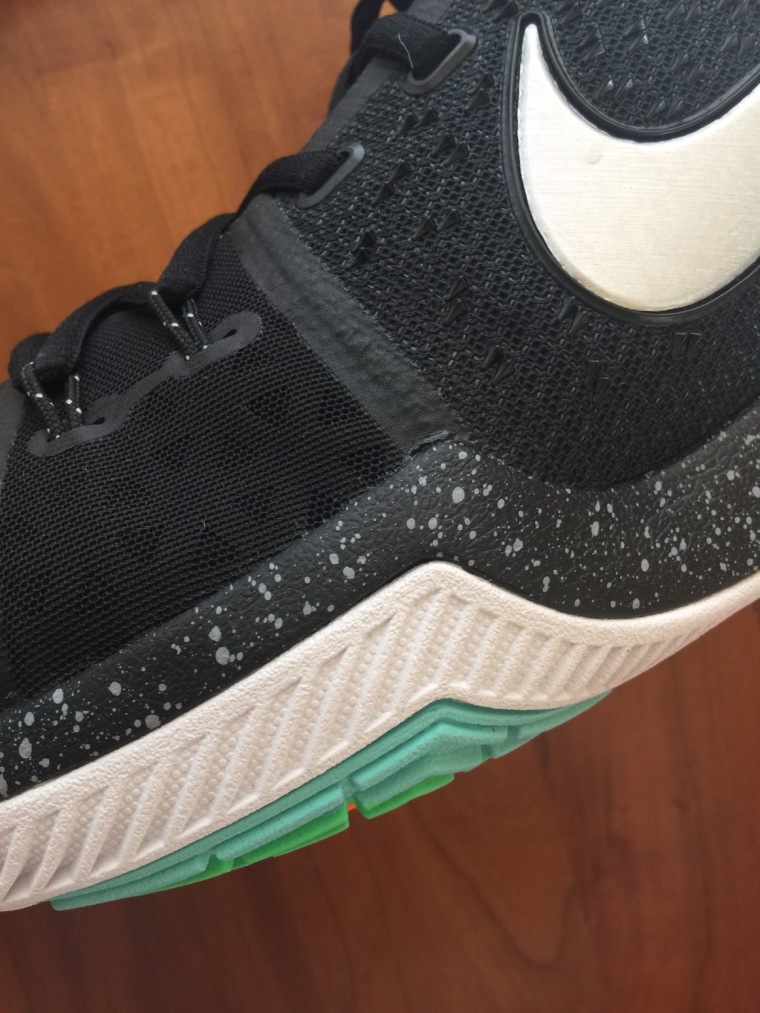Boy was I excited for this one – and you should be too! Presenting to you my comprehensive, outdoor-based Curry 8 performance review.
I don’t usually like to go all the way in calling a shoe a “next-gen” shoe due to its innovations tech-wise or design-wise for that time period, but you know what? I could be able to pull it off with the Splash Brother’s first independent brand shoe, the Curry 8 Flow by Curry Brand & Under Armour.
Or could I?
I’ve been playing in these for a couple of months now (pretty much since they dropped at my local online retailer) exclusively on outdoor courts.
One’s a blacktop and the other’s a synthetic rubber court. You know, those bouncy, rough surface courts that aren’t as unforgiving as concrete but still harder than indoor hardwood.
So to put all things into perspective, I’ve broken down the shoe for you from a practical standpoint. Is this a true “next generation” product that’s worth getting and lives up to the hype? Is it worth the $20 price increase? Is it a well-rounded shoe? Does it hold the test against regular outdoor play?
Let’s find out.
I. FIT & COMFORT
SIZING: UP 1/2 A SIZE
Let’s dive right into how these fit. Not an exaggeration – I don’t think anybody should go with their regular size when shopping for the Kyrie 7.
These definitely run small. I’ve seen some guys recommend going up a FULL size for a wider foot, and while I do think that might be overkill, going up half a size is recommended for most. Including those who have a narrow foot or a thicker, wider one.
Going up 1/2 a size myself and having a very wide foot, these still felt just a little too compact compared to how I’d ideally prefer. Although it might not be the size itself but how the internals of the shoe are constructed.
I don’t think anyone should go up a full size even if your toes are right at the edge after going up 1/2 a size. With such a minimal upper, minimal support features, and the way the shoe is sculpted, you’d most likely run into containment/lockdown issues.
GET READY FOR TOE BUMPS
Just like most people/reviewers were reporting – the shoe has a slight issue with keeping your foot 100% in place due to the incredibly minimal upper. Pair that with a slightly elevated heel area, and my toes were in a war.
Every time I did a quicker linear move (a stop-and-pop, a heel strike, etc.), my whole foot marginally shifts forward, resulting in an uncomfortable toe bump with the toebox.
Now, I’m not saying it’s a total dealbreaker as it’s not really felt while running or anything that doesn’t involve a quick/immediate linear motion, this still kinda spoiled what the shoe had to offer comfort-wise.
I’ve never seriously hurt my toes but after a longer session with these, those things definitely wanted some rest, that’s for sure.
But looking past that issue, the Curry 8 is comfortable. Very comfortable.
COMFORT: IT JUST FLOWS
Some say it might even be top 10 or even top 5 all-time comfortable. While I don’t think I’d be able to pick out just 5 or even 10 most comfortable shoes of all time, all I know is the Curry 8 is extremely pleasant to wear and play in, as long as I kept ignoring those damn toe bumps.
Firstly, it’s insanely light. I don’t know how it stacks up sheer numbers-wise compared to other light basketball sneakers but playing in these felt like I’ve got nothing on my feet. Ventilation is decent, every single heel-to-toe transition was almost ridiculously smooth and there’s some really nice foam padding around the ankle & achilles.
And then there’s the Flow cushion which, well, flows very nicely. But wait, there’s also an ultra-soft knit upper along with a very minimal, compression sock-like ankle collar which stretches out as much as you want it to, so the shoe is always super easy to put on.
Say what you want about the debatable choices durability or support-wise but, man, they absolutely nailed optimizing the fit and just how they feel on feet.
But perhaps it’s better described as not feeling anything at all, as at times I do manage to forget about those toe bumps and the experience becomes so smooth it’s not even funny. If someone would tell me the Curry 8 weighs 8 ounces and I didn’t know the truth – I’d probably believe them!
Bottom line, make sure to go up 1/2 a size, get some grippier socks on (ideally with a textured finish to minimize those toe bumps), lace ’em up tight, and enjoy the ride. If you value comfort – this is your jam.
II. TRACTION
The big thing about the Curry 8 was the fact that not a single inch of rubber was used. Not on the outsole, not on the midsole, nowhere. In fact, there’s no such thing as a distinct outsole & midsole here as the whole white bottom piece is made of lightweight foam.
With that came the concerns about the durability and effectiveness of the outsole, as science would tell you foam is a lot less reliable compared to rubber and its properties are vastly different. Well, let me begin by saying the traction on these is DEADLY. I mean every single part of that word.
I don’t know too much about how this particular foam was blended but it sticks to the floor like glue. The stops are instant with these. Not a single inch upon a stop, cut, change of direction, you name it.
In my LeBron 18 review, I said the cushion setup used on that shoe might be approaching a point where it’s almost too much. Well, with the Curry 8 Flow, I’ve come across a similar scenario, just with the traction. How grippy is too grippy?
While these barely squeak at all (it’s foam, duh), the bite is so aggressive it almost feels like it could throw you off balance if you’d let it to. Imagine yourself running at 30 miles an hour and then completely halting without any easing into it. If you’d have the Curry 8’s slapped on, you’d probably fall with your face flat on the ground.
I think this is right on the edge of the limit. This is incredible traction. Anything more might just be too much. So while I wouldn’t be able to tell you my top 10 most comfortable shoes of all time, if I had to put together such a list but traction-wise, yep. The Curry 8 would be there.
OUTDOOR DURABILITY: PRETTY GOOD FOR FOAM!
But are they reliable for constant outdoor use? After all, most of us are still only able to hoop outdoors. While 2+ months isn’t really an ideal period to make conclusions on the shoe’s outsole durability, so far they’re holding up well.
Not ONCE I had to wipe the outsoles off despite playing in a worn synthetic rubber court or the blacktop. There is some visible damage in the forefoot area, along the lateral side, and in a few other high-use areas. A handful of lines of the pattern are completely burnt off but fortunately, I don’t feel affected by this.
As long as this foam sticks due to its nature and the core base of the traction pattern is left intact, these will probably hold for a while. Not top of the line durability, sure, but definitely more reliable than today’s average modern hoop shoe which is usually indoor-focused.
III. CUSHION
UA’s brand new Flow cushion debuts with the Curry 8 and while it’s nothing we haven’t seen or felt before, it complements what the shoe is trying to deliver extremely well.
If you’ve played in a Curry shoe once or twice before, this shouldn’t feel that different, though I have to admit more cushion is offered than in pretty much anything we’ve seen from the shoe line. The shoe also rides higher than a typical Curry shoe, so people used to minimal, low-profile rides might feel a difference.
This cushion accomplishes two main things. One, it offers the same usual formula you’re used to seeing on a Curry shoe: a very fast, responsive & stable ride, smooth step transitions, and a sense of court feel.
And two, it does all that significantly more comfortably than the rest of the Curry sneaker lineup. More impact protection this time and, although minimal, but a slight bounce feel underfoot.
The heel area compresses a little bit but never too much, so you’re just as fast as you’d be on any other Curry. It’s just a little softer, and a little more pleasant this time.
The forefoot area is lower to the ground and feels firmer. Not completely dead but you won’t feel any bounce or apparent cushion. It’s all about speed and precision up there.
But it’s the smooth running transitions and overall flow of movements that make this setup fantastic. The heel is slightly elevated while the platform is slightly curved up at the front and while this is nothing new, it seems that they really nailed it here in terms of precision.
This feels like a high-end runner that happens to have additional qualities of a basketball shoe. If you’ve happened to do some runs in a higher-end pair of runners, you know how smooth those can feel. The Curry 8 is right along those. It’s comfortable. It’s not overdone. It’s efficient. Stellar job.
IV. SUPPORT
The support department is where things get a little interesting.
Do I think it’s a failure in terms of delivering security? No. But I do think the shoe was made with a handful of specific playstyles & builds in mind. Not saying this is bad but it would be tough to call the Curry 8 a very versatile shoe.
It’s nicely balanced, sure. But I’m sure there will be several guys who will require more support than what’s offered here. And that’s just the truth.
There is a rather small plastic heel counter in place along with a sculpted achilles pad inside, so my heel was both nicely padded and cupped in a secure manner. No issues with heel slippage. The platform of the shoe is wide and almost flat, so overall stability isn’t bad.
There are also these synthetic overlays along the sides which help with lateral & medial foot containment and the foam itself extends a tad bit laterally, acting as a mini-outrigger.
The medial sections of the foam do come out a little more, which does help plant off the inside foot more confidently. There’s also a small torsional plate for some torsional rigidity.
I never personally reached a point where I thought this isn’t enough for me but I’d be lying if I said I’d like a little more structure ideally. The upper is so minimal and flimsy, there aren’t enough strong support features in place to hold your foot together if you’re heavier or you’ve got an explosive/athletic playstyle.
While I’m not a big guy, I’m an explosive guard and did experience a handful of slides out of the shoe’s footbed. Not the best ankle support either. The tiny outriggers and a stable base helps prevent bad stuff from happening but a larger outrigger could’ve been welcome to help catch the foot on a more awkward plant/step.
I feel like this setup is pretty much made for Curry as he wears his hardcore tank-looking ankle braces, so I guess he’s set. But for guys at the frontcourt, heavier players, or anyone who plays with a lot of athleticism, there are better options out there.
But we can’t take away what the shoe accomplished. It’s not like it’s not supportive at all, as it is. Comfort, speed, and mobility are the clear points of emphasis here. If that’s your cup of tea or it matches how you play – you’re in serious luck!
V. MATERIALS & BUILD
The upper is what you call “barebones” – a thin knit covers most of the shoe while the synthetic plasticy material is layered along the medial & lateral sides to help containment. There’s also some Fuse overlays along the toebox, the back, and a few other high-wear areas.
And the whole bottom is just foam. That’s it. No raw materials, no huge shank plates, no carbon fiber, no real structure. It’s comfortable, absolutely. It’s seriously light, fairly breathable, and feels like a joy to wear. Except for the toe bumps.
But this type of comfort and a runner-like build undeniably comes at a cost. I don’t see these as very reliable for consistent blacktop action.
A season or two, probably. I’m not seeing any damage yet but it only makes sense to think a knit with no real extra structure isn’t going to last as long as leather, nubuck, suede, or even a more structured synthetic would.
Is it a good buy for $160? Depends on what you’re looking for. You’re definitely getting maximum comfort and mostly solid performance. If you’re looking for “premium” materials, the knit used here is nice but that’s up to you to decide if it’s worth the $160.
No real use of genuine materials might also throw some people off but hey, if people are complaining about that now, I guess they should’ve complained much earlier as the Curry line has been using primarily synthetic materials for a while now.
The lacing system is traditional but the shoe is a one-bootie upper, meaning it’s a single piece of material. No separated tongue, nothing like that. Not that important performance-wise but something you should know.
For those who aren’t fans of one-bootie uppers, this one’s a great example of one done very comfortably. And the shoe isn’t a nightmare to put on like some other one-bootie shoes, so you should be fine.
So bottom line, your typical modern use of minimal synthetic materials is utilized all over the Curry 8. If you’re no newcomer to these types of builds – you shouldn’t be surprised with the shoe.
VI. OVERALL

The Under Armour Curry 8 Flow is a breath of fresh air, that’s for sure. It takes comfort, freedom, and mobility to another level but there are still ways to improve. I think it’s a near-perfect shoe for a Curry-like player. Very quick, on the lighter side, mobility and precision are the pillars of his game.
But for the rest of us, perhaps mainly the heavier & bigger players, or for those who have more of a high-flying style of play, you might need something with a little more structure.
The shoe is mad comfy but be aware of the toe bump issue. Traction is phenomenal, Flow cushion is very nicely balanced without taking away anything, support could be better but it works for what it is. The upper’s a lightweight knit with minimal reinforcements so while it’s very comfortable and efficient, it might not last as long.
You can take these outdoors. Even regularly. I’m just not sure for how long. If you’re planning on playing outdoors regularly and would like to future-proof instead, the shoes on this list are the best options.
The Curry 8 is a very interesting shoe, to say the least. If you’ve always appreciated a Curry shoe before and would like something a little more comfortable – this is a KD 14 on steroids. I’ll leave it for you to decide if that’s your thing!

 Materials
Materials









 Flywire added some extra … Color
Flywire added some extra … Color  Perforations are placed in the shoe all the way from the midfoot and around the heel.
Perforations are placed in the shoe all the way from the midfoot and around the heel.

 Does this natural ? I’m really working to flex this shoe .I think a thigh master is easier to squeeze than this. Look how red my fingertips are. The overall stiffness of the shoe contributes to the poor heel fit. It gets better as it breaks in but still isn’t good. Imagine trying to walk with a wooden plank as a shoe; the wood won’t flex and follow your foot, same thing here.
Does this natural ? I’m really working to flex this shoe .I think a thigh master is easier to squeeze than this. Look how red my fingertips are. The overall stiffness of the shoe contributes to the poor heel fit. It gets better as it breaks in but still isn’t good. Imagine trying to walk with a wooden plank as a shoe; the wood won’t flex and follow your foot, same thing here.











 Masters champion Tiger Woods holds a replica of the Masters Trophy after winning the tournament at the Augusta National Golf Club in Augusta, Ga., Sunday, April 13, 1997. (AP Photo/Bill Waugh)[/caption]
Masters champion Tiger Woods holds a replica of the Masters Trophy after winning the tournament at the Augusta National Golf Club in Augusta, Ga., Sunday, April 13, 1997. (AP Photo/Bill Waugh)[/caption]














